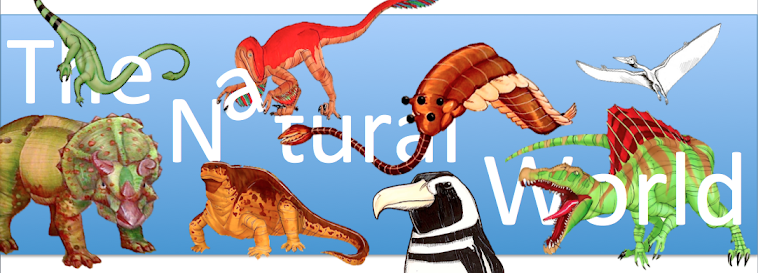Most of you have probably heard about the so-called "pterodactyls," the flying creatures that lived during the time of the dinosaurs. Like most of us, you might not know exactly what a pterodactyl, more properly known as a pterosaur, is. Is it a bird? A bat? A dinosaur? Possibly even an insect? Or a distinct group of archosaurs that are thought to be fairly closely related to both dinosaurs and crocodilians, but scientists still aren't 100% positive how they fit into the reptilian family tree? Well, if you were thinking the last option, then lo and behold: you're right! Although the pterodactyls would have soared through the skies much like birds, bats, and even some insects of today, they would have been a distinct group altogether. They are also not quite dinosaurs: as the last option says, no one knows quite yet how exactly they fit in!
 |
| Pyg perches next to the skeleton of one of the most famous pterosaurs, Pteranodon, at the Morrison Natural History Museum in Colorado! |
 |
| Pyg checks out a cast of one of the more famous Pterodactylus specimens from Solnhofen! |
 |
| Pyg learns more about both the Pterodactylus specimen from above (left), but also about Archaeopteryx (right)! This cast is of the best specimen of this primitive bird, and was discovered in 1877! (The original specimen was, not the cast). |
And it's not just feathers that fossilize, either. Wing membranes, composed of a flap of skin, are being discovered more and more frequently when it comes to pterosaurs. When it comes to Pterodactylus, scientists have such a large sample size that they are able to reconstruct much of the soft-tissue anatomy of this particular pterosaur! Scientists also have a very thorough growth series for this particular pterosaur, with individuals ranging from hatchlings, just a few days to a few weeks old, all the way to very old individuals with wingspans of around five feet, which, for a Pterodactylus, is very hefty indeed!
Although we've talked a lot about Pterodactylus, there are many other fascinating pterosaurs! I've taken a recent interest in pterosaurs, but before we dive on in to a wide variety of posts, I wanted to provide a brief introduction! Remember, this is a VERY brief introduction. For a more thorough introduction to pterosaurs, consult a book or something, or check back in the future as we learn more about pterosaurs! Don't hold me to it, but I feel like sometime in the near future, I will be talking about Dimorphodon and the anurognathids! Check back soon!


No comments:
Post a Comment